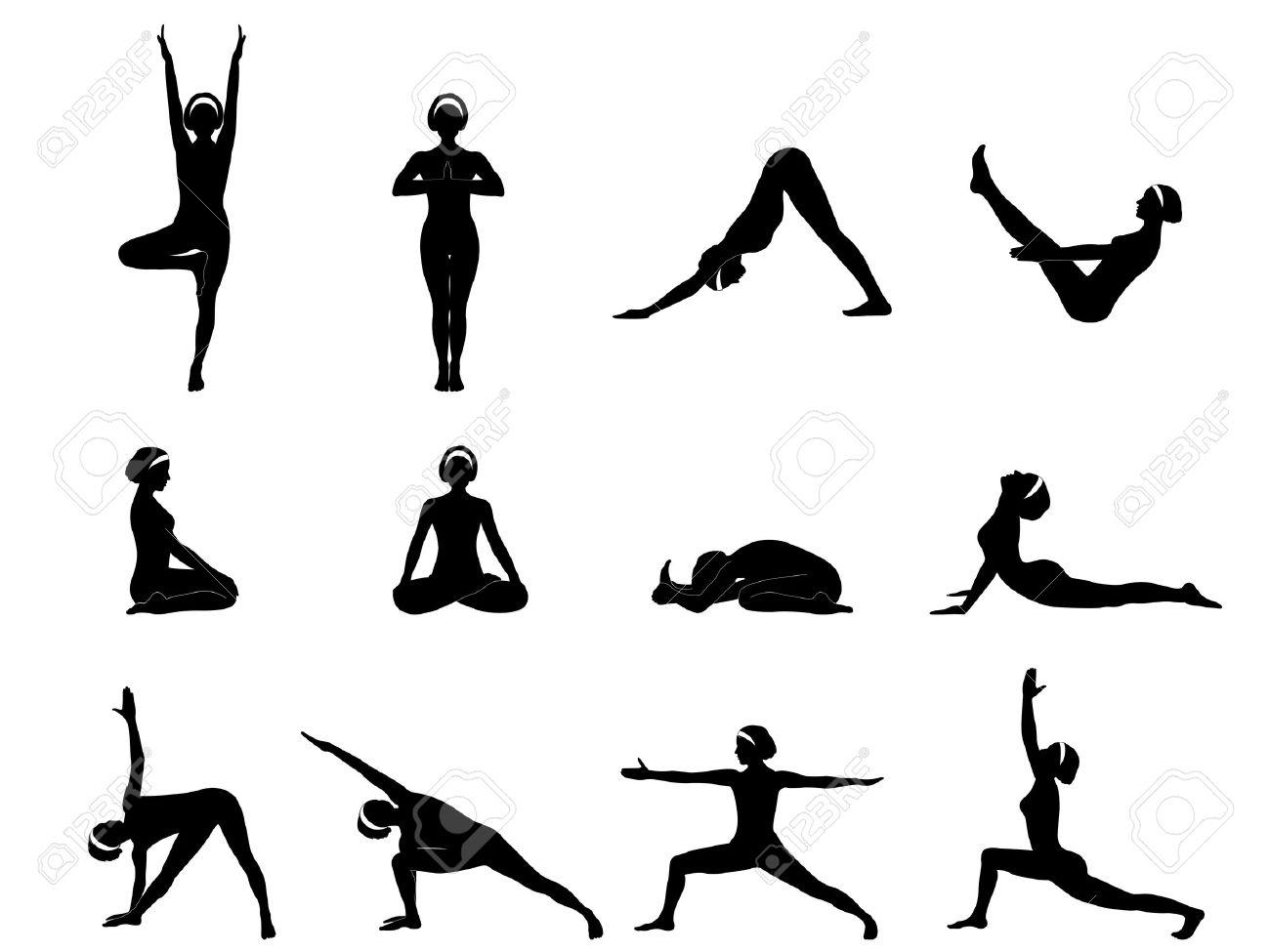
Regular yoga practice can help with bronchial asthma. Asthma is a chronic inflammatory disorder of the airways, leading to increased airway hyperresponsiveness. This condition can lead to recurring episodes of wheezing, chest tightness and coughing as well as widespread airflow obstruction. This condition can be reversible spontaneously, but alternative treatment methods are of great interest for patient care. Asthma yoga could be a great option for bronchial asthma.
Study of Asthma Yoga
Participants must be diagnosed with asthma and have a baseline condition suitable for testing the effectiveness or yoga. All researchers must have access to the study and adhere to strict inclusion and exclusion criteria. This article will provide information on the criteria for inclusion as well the main aspects of yoga and asthma. This article will address the exclusion criteria and some of the most important aspects of yoga as a means of treating asthma.
Patients must meet strict criteria and practice 20-minute yoga sessions three days a week. The study subjects did not follow the prescribed dosage. However, their journal entries show that they were unable to do so. This could have hindered the exercise's effectiveness. It was also not shown that yoga reduces the use of medication, decreases asthmatic daytime attacks, or improves peak flow rates in patients suffering from the disease.

Dandasana pose
Dandasana, which aids in breathing, is recommended for those who are asthmatic or have other health problems. This posture requires that your pelvis, heels, and toes are bent forward. You will also need to practice normal breathing throughout the pose and follow-up positions. You may need to practice it for a while because it requires a lot of practice.
Asana backward bend is extremely relaxing and can help with asthma symptoms. It opens the chest and alleviates stress. It's also good for lower back pain. This pose can help you take your asthma medication. Experts recommend that this pose be done as soon as you are finished taking your medication. This pose can also be used to reduce stress. You shouldn't be alarmed that it takes more time than you wish.
Diaphragmatic breathing
If you have asthma, you might want to try diaphragmatic breathing. This technique relaxes the body while focusing on the breath. While it can be difficult to learn, there are many health benefits. This practice is not for everyone. Talk to your doctor if you have any questions. You can practice diaphragmatic breathing twice a day for 10 minutes. After that, you can increase how long you spend practicing. You can also place a book on your abdomen to make breathing more challenging.
Diaphragmatic breathing is a method of breathing that focuses on the diaphragm. It is a muscle located below the lungs. This allows you to breathe more efficiently and uses all your lung capacity. You breathe normally but take shallow breaths. This is not the best way to use your lungs' full potential. Diaphragmatic breathing is when you fully engage your diaphragm with each inward breath. Doing this will allow your lungs to fill more efficiently and cause less pressure.

It improves your quality of living
According to an article in August's Am Fam Physician, asthma yoga may improve quality of life for those suffering from the disease. Asthma is a serious illness affecting 24 million people in the U.S., costing an estimated $12.7 billion per year and resulting in high costs of absenteeism and healthcare. While there is not a lot of scientific evidence to support the use of yoga to treat asthma, some studies suggest that it may help reduce symptoms and increase quality of life for people with the condition.
The three studies used data from three different studies to determine the effect yoga had on the quality-of-life of asthmatics in Northern India. The participants were evaluated on a scale that measures quality of life in people with asthma and is based on a mini-asthma quality-of-life questionnaire. The study was completed by five people. However, many patients with asthma declined to be included. However, the results are promising and may prove to be the next step in the treatment of asthma.
FAQ
Is weightlifting more effective at burning fat?
Weight lifting will help you burn more fat, but it's best to combine it and cardio.
To maximize the benefits of weightlifting, you need to perform it after cardio workouts.
When done correctly, weightlifting increases your heart rate and oxygen consumption which helps you lose weight.
You will not notice any changes in your body composition if you don’t combine it and cardio.
What is your favorite workout order?
It all depends what you want. You should start with heavy weights if your goal is to build muscle mass. Then, move on to cardio. Then if you want to lose weight, go from cardio to strength training.
Cardio is a great way to lose fat if you are just looking for a quick workout. After that, you can add strength training.
You should do cardio last if your goal is to increase muscle mass. This stimulates growthhormones, which helps build muscle mass.
You should also eat before your workout. This will fuel your muscles and make them work harder. It makes you feel better when you exercise.
What is the best way to lose weight?
It's not easy to lose weight. Many people give up because they don’t know what else to do.
There are simple steps you can take in order to lose those extra pounds.
You must first ensure that you are consuming fewer calories than what you burn. If you are eating more than you are burning, then you are going to gain weight.
You should also exercise regularly in order to lose all those calories. You can choose from a variety of exercises such as walking, biking or dancing.
Third, stop smoking and drinking alcohol. These habits can cause you to consume more calories that you would otherwise.
Fourth, cut down on junk food and fatty foods. You can replace them by healthier choices such as fruits, vegetables or lean meats.
Fifth, you need to change your lifestyle and adopt new habits. You may have to get up before the rest of the world to exercise.
Sixth, it is important to be disciplined about your diet and follow it.
Finally, you have the option to join a gym and take part in an aerobics session to burn off those extra calories.
You'll quickly start to notice results if you follow these simple tips.
Is it true?
Protein helps maintain healthy bone and tissue. But consuming too much protein can lead to calcium excretion through urine. This can lead to kidney stones.
It is important to keep in mind that not everyone will develop kidney stones if they consume more protein than 2 grams per kilogram (2.2lbs). It is possible to eat high levels of protein without developing kidney stones.
Watching your sodium intake can help prevent kidney stones. Sodium regulates the water balance of the kidneys. High levels of sodium are linked to a greater risk of developing renal stones.
You can also try reducing your protein intake if you get kidney stones. About half of adults' daily caloric intake is made up of protein. A reduction in protein intake will likely result in weight loss.
If you do decide to eat more protein, don't go overboard. Aim for less than 20% of total calories from protein.
Statistics
- According to the American Heart Association, blood pressure should be checked at least once every two years, beginning at age 20. (my.clevelandclinic.org)
- 10 pounds in a month is likely during a lean bulking phase, especially for beginners. (muscleandstrength.com)
- An estimated calorie range for moderately active adult males falls between 2,200 to 2,800 calories per day, depending on age. (eatright.org)
- By John Thompson Take a whopping 38% off a set of PowerBlock Pros. (menshealth.com)
- The PRS enabled risk stratification for overall prostate cancer and lethal disease with a four-fold difference between men in the highest and lowest quartiles (HR, 4.32; 95% confidence interval [CI], 3.16-5.89). (pubmed.ncbi.nlm.nih.gov)
External Links
How To
How can I burn fat while exercising?
Exercise reduces calories by increasing metabolism, and oxygen consumption.
Exercise at a moderate intensity to safely lose weight.
To burn fat while exercising, follow these tips:
-
Cardio exercises include walking, running, swimming, cycling, running and jogging.
-
Exercise for 30 minutes three times per week.
-
You can lose weight by adding strength training to the routine.
-
Avoid doing intense exercises. You can build muscle without having to lose muscle tissue.
-
Drink plenty of water during exercise. Water flushes out toxins, and keeps your body properly hydrated.
-
After working out, make sure to drink low-fat proteins shakes. Protein shakes can help boost energy and repair muscles.
-
So you don’t feel hungry, eat smaller meals throughout your day.
-
Don't skip breakfast! Skipping breakfast can cause you to feel tired and sluggish.
-
Mental health is important. Stressful situations can slow down metabolism.
-
Keep a positive attitude. Studies show that people who believe they're overweight gain more weight than those who think they look pleasing.
-
Get enough sleep. A lack of sleep makes it difficult to lose fat.
-
Always be active. Make sure you get up and move every hour.
-
Maintain a healthy diet. Eat right to feel satisfied and full for longer.
-
Find relaxation techniques. A tense mind doesn't allow your body to release stress hormones that break down muscle tissue.
A balanced diet includes all essential nutrients needed for growth and development.
Six small meals per day is better than three large meals. This gives your body the time it needs to process what you've eat.
For strong bones to be maintained, you need approximately 500mg of calcium per day. Calcium is available in dairy products like milk, yogurt, fortified soy beverages, orange juice, cereal, bread, and cereals.
Calcium can be found in leafy green veggies, beans, tofu and nuts as well as seeds, nuts and cheese.
Vitamin D is required for calcium absorption. Vitamin D can also be found in some fortified foods such as eggs, fish, and yolk.
Vitamin E is vital for your skin's health. Vitamin E can also be found in vegetable oil, wheat germ oils, peanuts as well almonds, sunflower seeds and corn.
Zinc is essential for healthy immunity and wound healing. Zinc is found in oysters, legumes, meats, whole grains, and seafood.
Zinc deficiency can cause fatigue and loss of appetite. It can also lead to depression and impaired immunity.
Insulin resistance is caused by eating too much sugar, which can increase blood glucose levels. Insulin resistance can lead to weight gain.
High levels of free radicals can lead to insulin resistance. Free radicals are molecules containing unpaired electrons which cause damage to cells membranes.
Most free radicals come from pesticides herbicides, food additives, preservatives smoking, radiation, chemical in cosmetics, lotions and household cleaning supplies.
Free radical damage can lead cancer, heart disease or diabetes, arthritis, asthma, or other forms of aging.
Antioxidants are essential for preventing free radical damage. Antioxidants protect against oxidative damage.
Vitamin C (found on citrus fruits), Beta carotene, found in carrots and sweet potatoes, spinach and broccoli, cantaloupe (found in tomatoes, mangoes and peppers), and Vitamin E (found nuts, olive oil and avocados).
Other antioxidant nutrients include selenium, copper, manganese, and zinc.
Selenium protects cells from free radical damage. Selenium can be found in Brazil nuts and liver, kidneys, liver, kidneys, shrimp, cod, turkey and lamb as well as chicken.
Copper protects your eyes, brain, eyes and red blood cell. Copper is also found in poultry, meat, and organs.
Manganese is essential for bone structure. Manganese can also be found in oatmeal, brown rice, spinach and bananas.
Zinc is essential for normal growth, reproduction, wound healing, and average growth. Zn is found in lean cuts of meat, white fish, poultry, and eggs.